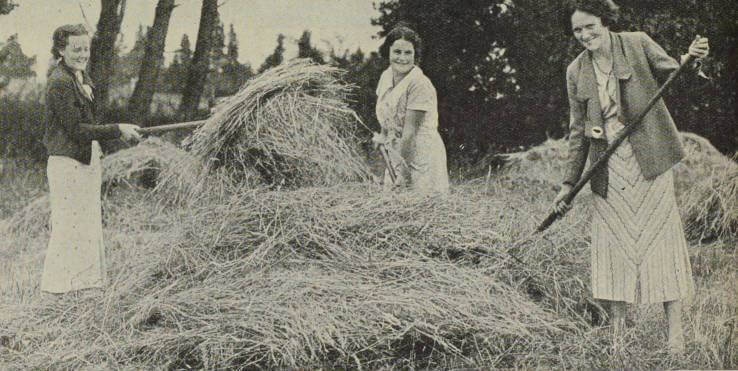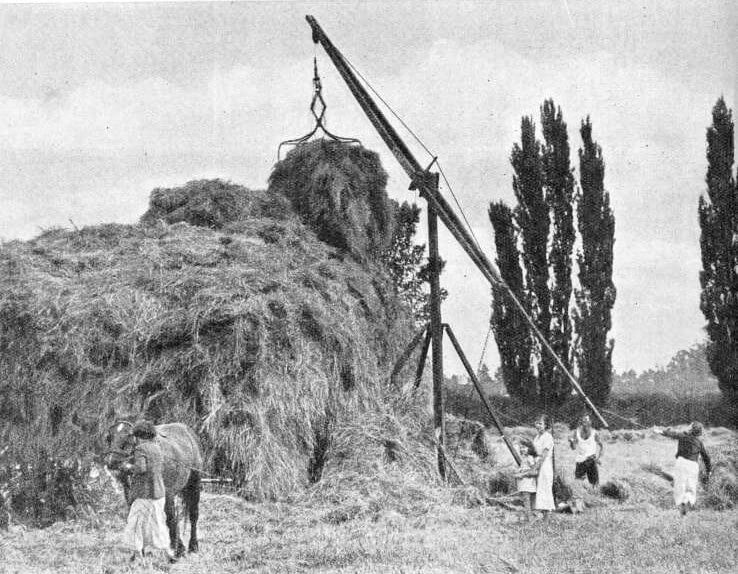
Stacking operations in Paterangi.
Copious rainfall in the Te Awamutu district led to prolific pasture growth but changeable weather delayed hay making.
Progressive settlers were considering using modern machinery to bale hay crops instead of the usual custom of stacking. Haystacks were being destroyed by spontaneous combustion caused either by damp material being put into the stack or stacks not being sufficiently protected from the weather. Baling from the paddock meant hay could be stored in perfect condition, particularly where farm sheds were available. Modern machinery was thought to be more labour saving and economical and it was likely that stacking the hay crop would one day be looked on as an obsolete method.
Securing farm labour, though, was a problem with farmers sending their sons to work in towns. In the Te Awamutu and Ōhaupō areas, under the relieving farm manager scheme, there was no shortage of reliable, experienced men to take charge or assist on farms when a farmer wished to take a holiday. There was, however, a definite shortage of experienced farm labourers, and a pronounced shortage of youths. In many cases this caused farmers considerable hardship and resulted in dairymen reducing the size of their herds. The recent rise in wool values had also brought about a strong tendency on farms to reduce the herds further and to replace them with sheep. Mr Pierce of Ōhaupō despaired “our own people are not sending their children on the land. They are going in for the professions and industrial trades. I would like to know how many of our people are sending their children to positions in the towns. They are expecting labour in place of their own children, and the people who are making the most noise are those who are offering the worst conditions”.
A strong protest was made to the government over the intention to remove and then re-erect Te Awamutu’s clock tower. An open letter to the acting Prime Minister, the Postmaster General, and the Minister of Public Works called the idea official vandalism and a gigantic waste of money merely to satisfy official whim. The letter appealed for a halt to one of the greatest follies that had ever been threatened in the name of Government. No one else would pull down a £1000 tower and then spend another £1000 to re-erect it a few yards away. The tower wasn’t faulty or dangerous – it had come through 25 years and still stood without a crack or blemish. This vandalism was a wicked, wanton waste at the command of some snugly entrenched official in Wellington.
A very merry party gathered at the home of Mr and Mrs Sullivan of Ōhaupō on the occasion of the coming-of-age of their eldest twin daughters, the Misses Mary and Eileen Sullivan. Sweet peas artistically decorated tables and the guests-of-honour received many gifts. A happy day was brought to a close with cards in the evening.

Stacking operations in Paterangi.









